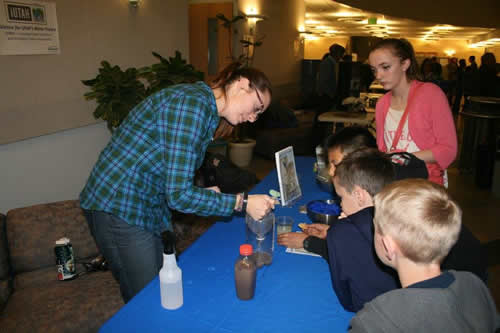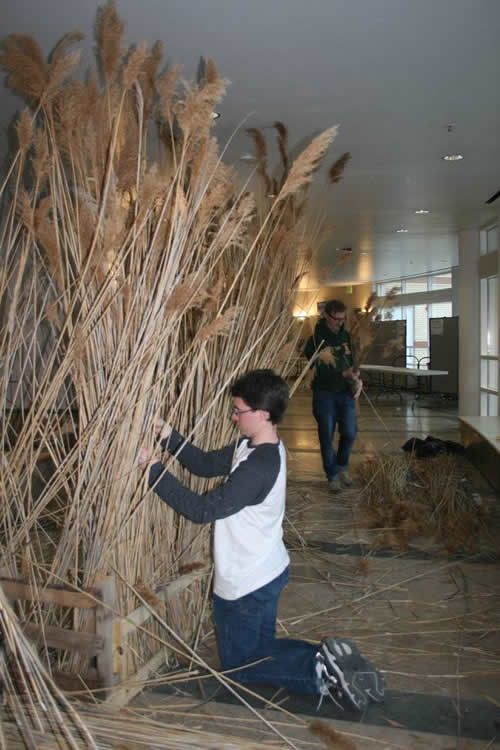News Article
March 11, 2015
This month’s Science Unwrapped tackled the topic of Utah wetlands and the invasive Phragmites plant. iUTAH had a booth at the event with a simple experiment to explain the importance of wetlands in the Great Salt Lake ecosystem. We demonstrated how wetlands act as a natural filter or sponge by absorbing rain and floodwater, using a household sponge and muddy water to create a mini wetland ecosystem. iUTAH EOD staffers Caitlyn Lewis and Mark Brunson were at the booth to explain the experiment and answer questions about the iUTAH project.
“Wetlands are among Utah’s most critical ecosystems,” says Utah State University wetlands ecologist Karin Kettenring, feature speaker at this month’s Science Unwrapped. During this event, Kettenring explained the importance of wetlands and the role of wetland ecologists. She also described that the Great Salt Lake wetlands are vulnerable to a number of threats, including pollution and loss of habitat from development, climate change and invasive plants such as Phragmites.
There were many booths at the event that provided information and hands-on activities for the whole community. A Phragmites maze showed kids just how tall the pesky plants can be, while Kettenring’s graduate students taught about different wetland plants, animals, and soils. Science Unwrapped continues throughout the spring semester with the theme of “Great Salt Lake Today” during the USU “Year of Water".



« Back to list of all news articles


